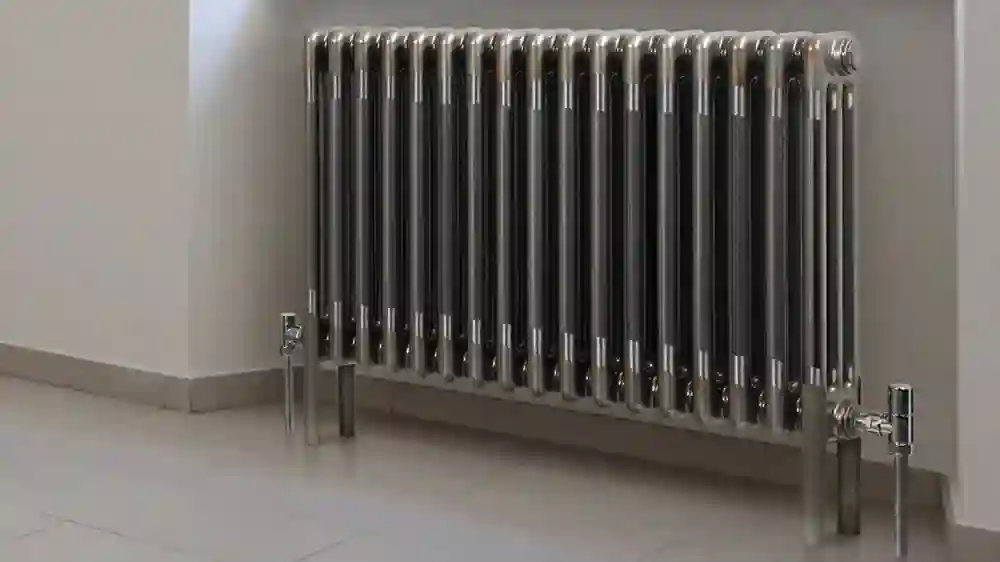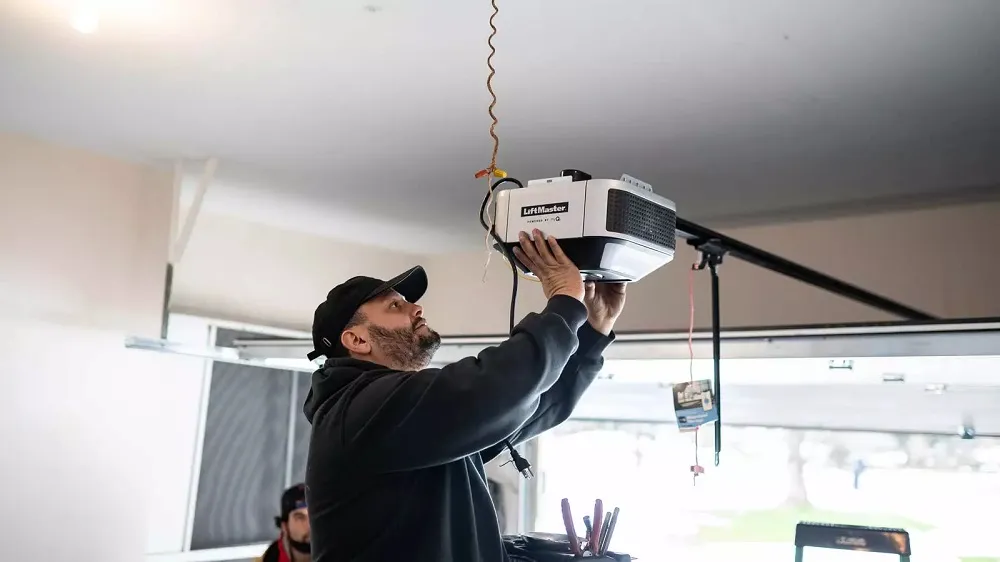Home & Garden
DIY Septic Tank Pumping: Is It Legal and Safe?

Septic tank maintenance is a crucial responsibility for homeowners who rely on septic systems for wastewater management. Routine septic tank pumping is an essential part of this maintenance, ensuring the proper functioning of your system. While many homeowners choose to hire professionals for septic tank pumping, others may consider a do-it-yourself (DIY) approach to save costs. However, before attempting DIY septic tank pumping, it’s essential to understand whether it is legal and safe. In this article, we will explore the legal and safety aspects of DIY septic tank pumping and provide guidance for responsible septic system maintenance.
The Role of Septic Tank Pumping
Before delving into the DIY aspect, let’s briefly understand why septic tank pumping is necessary:
- Waste Separation: In a septic system, wastewater from your home enters the septic tank, where it undergoes a natural separation process. Solids settle at the bottom to form a layer of sludge, while lighter materials like oils and fats rise to the top, creating a layer of scum. The relatively clear effluent remains in the middle and flows into the drain field.
- Accumulated Solids: Over time, solid waste accumulates in the septic tank, gradually filling it up. If not removed through pumping, these solids can clog the tank, impair the treatment process, and potentially lead to system failures and backups.
Legal Considerations for DIY Septic Tank Pumping
The legality of DIY septic tank pumping varies by location and is subject to local regulations and ordinances. Here are some key legal considerations to keep in mind:
- Permit Requirements: Some areas may require permits for septic tank pumping, whether performed by professionals or homeowners. Check with your local health department or environmental agency to determine if a permit is necessary.
- Regulatory Compliance: Compliance with local, state, and federal regulations governing septic systems is paramount. These regulations often specify how septic tank pumping should be conducted and by whom. Failure to comply with regulations can result in fines and legal consequences.
- Liability Issues: DIY septic tank pumping carries potential liability issues. If any damage occurs to your property or the environment during the process, you may be held responsible for cleanup and associated costs.
- Environmental Impact: Improper septic tank pumping can result in the release of untreated sewage into the environment, posing a risk to public health and the ecosystem. Complying with regulations and using responsible practices are essential to prevent environmental harm.
- Safety Concerns: Safety is a significant concern when dealing with septic systems. Septic tank gases, including toxic hydrogen sulfide (H2S), can be hazardous when inhaled. Improper handling of equipment and exposure to sewage can also pose health risks.
Safety Considerations for DIY Septic Tank Pumping
If DIY septic tank pumping is legally permitted in your area and you choose to undertake the task, prioritize safety above all else. Here are crucial safety considerations:
- Protective Gear: Wear appropriate protective gear, including gloves, eye protection, and clothing that covers your skin, to minimize contact with sewage and harmful gases.
- Proper Equipment: Use the right equipment and tools for the job, including a septic tank pump, hoses, and safety gear. Ensure that all equipment is in good working condition.
- Ventilation: Adequate ventilation is essential when working around septic tanks to disperse harmful gases. Work in well-ventilated areas or consider using portable fans to ensure a constant flow of fresh air.
- Avoid Open Flames: Do not smoke or use open flames near the septic tank or during the pumping process, as methane gas may be present, which is highly flammable.
- Prevent Accidents: Exercise caution to prevent accidents. Ensure that all equipment is secured, and work with a partner if possible. Be aware of any potential hazards, such as unstable ground or slippery surfaces.
- Emergency Response: Have an emergency response plan in place in case of accidents or exposure to harmful gases or sewage. Know the location of emergency services and how to contact them.
The DIY Septic Tank Pumping Process
If you decide to proceed with DIY septic tank pumping, here’s a simplified overview of the process:
- Gather Equipment: Acquire all necessary equipment, including a septic tank pump, hoses, safety gear, and a suitable container for collected waste.
- Locate the Septic Tank: Identify the location of your septic tank’s access cover. This is typically a concrete or plastic lid on the ground.
- Prepare the Area: Clear any obstacles around the access cover and ensure a safe and accessible work environment.
- Safety Gear: Put on your safety gear, including gloves, eye protection, and appropriate clothing.
- Pump the Tank: Connect the septic tank pump to the access cover and begin pumping the tank’s contents into the designated container.
- Monitor Progress: Monitor the pumping process, and be prepared to stop if any issues arise, such as equipment malfunctions or exposure to harmful gases.
- Proper Disposal: Dispose of the collected waste following local regulations and guidelines. This may involve taking it to an approved waste treatment facility.
- Clean and Disinfect: Thoroughly clean and disinfect all equipment used in the process, as well as your clothing and safety gear.
Conclusion
DIY septic tank pumping can be legally and safely performed in some areas, but it carries significant responsibilities and risks. It is essential to understand and comply with local regulations, prioritize safety at all times, and be aware of the potential environmental and liability implications.
Before attempting DIY septic tank pumping, consult with local authorities, consider seeking professional guidance, and thoroughly educate yourself on the process and safety precautions. In many cases, hiring a qualified septic professional is the most reliable and responsible approach to septic tank maintenance, ensuring the proper functioning of your system and minimizing potential legal and safety concerns.
Home & Garden
Heat Up Your Home: Finding the Perfect Radiators Online for Every Space

Radiators are essential components of any home heating system, providing warmth and comfort during the colder months. However, they are no longer just functional necessities; they can also be stylish design elements that complement your interior decor. With the convenience of online shopping, finding the perfect radiator for your space has never been easier. This comprehensive guide will help you navigate the world of online radiator shopping, covering everything from types and styles to considerations for different rooms in your home.
Types of Radiators
Before diving into online options, it’s essential to understand the different types of radiators available:
1. Panel Radiators
Panel radiators are the most common type and consist of a series of horizontal panels through which hot water flows. They are versatile, efficient, and suitable for most rooms in the house.
2. Column Radiators
Column radiators feature vertical columns that allow for greater heat output and a classic aesthetic. They are ideal for larger rooms or those with high ceilings, adding a touch of elegance to any space.
3. Designer Radiators
Designer radiators come in various shapes, sizes, and materials, making them a popular choice for those looking to make a statement. They can range from sleek and minimalist to bold and avant-garde, offering both style and functionality.
4. Towel Radiators
Towel radiators, also known as heated towel rails, serve a dual purpose by providing warmth for the room while also heating towels. They are commonly found in bathrooms and are available in various designs to suit different styles.
Considerations for Different Rooms
When selecting radiators online, it’s essential to consider the specific requirements of each room in your home:
1. Living Room
In the living room, radiators are often a focal point, so it’s essential to choose a design that complements the decor. Designer radiators or column radiators can add a touch of sophistication, while panel radiators can provide efficient warmth without detracting from the room’s aesthetics.
2. Bedroom
For bedrooms, comfort is key. Consider radiators with adjustable thermostatic valves that allow for precise temperature control. Slimline panel radiators or column radiators can fit neatly against walls without taking up too much space.
3. Kitchen
In the kitchen, where space is often at a premium, compact panel radiators or vertical column radiators can be a practical choice. Consider radiators with a higher heat output to compensate for the additional heat loss caused by cooking.
4. Bathroom
Towel radiators are a popular choice for bathrooms, providing warmth for the room while also keeping towels toasty. Electric towel radiators are convenient for bathrooms without central heating or for adding extra warmth during the colder months.
Finding Radiators Online
Now that you know what type of radiator you need for each room, it’s time to start shopping online. Here are some tips for finding the perfect radiators on the internet:
1. Research and Compare
Take the time to research different brands, styles, and prices before making a decision. Many online retailers offer a wide selection of radiators, so comparing options can help you find the best value for your budget.
2. Read Reviews
Customer reviews can provide valuable insights into the quality and performance of radiators. Look for reviews from verified purchasers to get a better understanding of the product’s pros and cons.
3. Check Dimensions and Specifications
Make sure to check the dimensions and specifications of the radiators to ensure they will fit in your space and meet your heating requirements. Most online retailers provide detailed product descriptions, including dimensions, heat output, and installation requirements.
4. Consider Delivery and Returns
When purchasing radiators online, consider factors such as delivery times and return policies. Look for retailers that offer fast and reliable delivery options and have a hassle-free returns process in case the radiator doesn’t meet your expectations.
Top Online Retailers for Radiators
Now that you’re ready to start shopping, here are some of the top online retailers where you can find a wide selection of radiators:
1. BestHeating
BestHeating offers a comprehensive range of radiators, including panel radiators, column radiators, designer radiators, and towel radiators. Their website features detailed product descriptions, customer reviews, and helpful guides to assist you in finding the perfect radiator for your space.
2. Screwfix
Screwfix is a popular destination for DIY enthusiasts and tradespeople alike, offering a variety of radiators at competitive prices. They stock a wide range of styles and sizes, with options to suit every budget and heating requirement.
3. Wayfair
Wayfair is known for its extensive selection of home furnishings, including radiators. Their website features user-friendly navigation and filters that make it easy to browse radiators by type, style, and price range. They also offer fast and reliable delivery options.
4. The Radiator Company
As one of the UK’s leading suppliers of radiators, The Radiator Company offers a wide range of styles and designs to suit any taste. They provide bespoke solutions and can help you find the perfect radiator for your space, whether it’s a traditional column radiator or a contemporary designer radiator.
Conclusion
Finding the perfect radiators online for every space in your home is easier than ever with the abundance of options available. Whether you’re looking for efficient panel radiators, classic column radiators, stylish designer radiators, or practical towel radiators, there’s a radiator to suit every room and budget. By considering the specific requirements of each space and shopping from reputable online retailers, you can find radiators that not only provide efficient warmth but also enhance the aesthetics of your home.
Home & Garden
Penthouse Hub’s Sustainable Building Materials and Practices

In an era marked by environmental consciousness and a growing concern for the planet’s well-being, Penthouse Hub has emerged as a pioneering force in luxury real estate. Beyond offering opulent penthouses, this visionary developer is leading the way in sustainable building materials and practices. In this article, we will explore how Penthouse Hub is committed to reducing its environmental footprint by incorporating sustainable building materials and eco-friendly construction practices into their projects.
A Paradigm Shift Towards Sustainability
Penthouse Hub recognizes that luxury living need not come at the expense of the environment. The company has undergone a paradigm shift, aligning its values with sustainability and environmental responsibility. This transformation is evident in their choice of building materials and construction methods.
Locally Sourced and Recycled Materials
Penthouse Hub prioritizes the use of locally sourced and recycled materials in their construction projects. By minimizing the transportation distance of building materials, they reduce carbon emissions associated with transportation. This approach also supports local economies and reduces the environmental impact of mining and extraction.
Recycled materials such as reclaimed wood, recycled glass, and salvaged metal are integrated into their designs. These materials not only lend a unique character to their penthouses but also divert waste from landfills and reduce the demand for virgin resources.
Energy-Efficient Windows and Insulation
A crucial aspect of sustainable construction is energy efficiency, and Penthouse Hub leaves no stone unturned in this regard. The installation of energy-efficient windows and insulation is standard practice in their projects. High-quality windows and doors with superior insulation properties help maintain consistent indoor temperatures, reducing the need for excessive heating or cooling.
These measures not only lower energy consumption but also translate into significant cost savings for residents over time. Penthouse Hub’s commitment to sustainability aligns with their goal of providing residences that are both luxurious and environmentally responsible.
Green Roofs and Vegetation
Penthouse Hub goes beyond traditional roofing methods by incorporating green roofs into their designs. Green roofs are covered with vegetation and planted with a variety of flora, creating not only a stunning visual aesthetic but also significant environmental benefits. These roofs reduce heat absorption, lower energy usage for cooling, and provide natural insulation.
Additionally, green roofs contribute to improved air quality and serve as habitats for local wildlife. Penthouse Hub’s dedication to the environment extends to the very top of their buildings, transforming previously unused rooftop spaces into vibrant green ecosystems.
Water Conservation Practices
Water conservation is another key aspect of Penthouse Hub’s sustainability efforts. Their buildings are equipped with low-flow plumbing fixtures and water-efficient appliances that minimize water wastage. Rainwater harvesting systems are also integrated into their designs, allowing residents to harness rainwater for non-potable uses like irrigation and cooling systems.
By reducing water consumption, Penthouse Hub not only lowers utility costs for residents but also contributes to the preservation of this precious resource, especially in regions prone to droughts.
Solar Power Integration
Penthouse Hub embraces renewable energy solutions by integrating solar panels into their buildings. These panels harness the power of the sun to generate clean and sustainable electricity. By utilizing solar energy, residents can reduce their dependence on fossil fuels and lower their carbon footprint.
The incorporation of solar power systems not only benefits the environment but also provides a practical and economical source of energy for residents. It’s a win-win solution that aligns with Penthouse Hub’s commitment to sustainability.
Sustainable Construction Practices
Sustainable building materials are just one part of the equation; sustainable construction practices are equally crucial. Penthouse Hub employs eco-friendly construction methods, including:
a. Waste Reduction
Construction waste is a significant environmental concern. Penthouse Hub actively seeks to minimize waste by recycling materials, using efficient construction techniques, and adhering to responsible disposal practices. This not only reduces landfill waste but also conserves valuable resources.
b. Efficient HVAC Systems
Penthouse Hub incorporates energy-efficient heating, ventilation, and air conditioning (HVAC) systems that optimize temperature control while minimizing energy consumption. This results in lower energy bills for residents and a reduced carbon footprint for the building.
c. Sustainable Landscaping
Landscaping is an essential part of any luxury residence. Penthouse Hub ensures that landscaping is not just aesthetically pleasing but also eco-friendly. Drought-resistant plants, native species, and efficient irrigation systems are used to create sustainable outdoor spaces that thrive in harmony with the natural surroundings.
Conclusion
Penthouse Hub’s commitment to sustainable building materials and practices is a testament to their dedication to the well-being of the planet and their residents. By sourcing locally, using recycled materials, focusing on energy efficiency, implementing green roofs, conserving water, integrating solar power, and practicing sustainable construction, they have redefined luxury living in an environmentally responsible way.
Their approach demonstrates that luxury and sustainability can coexist, setting a new standard for the real estate industry. Penthouse Hub’s projects not only offer opulent living spaces but also serve as inspiring examples of how innovation and environmental consciousness can go hand in hand. In a world where environmental stewardship is of paramount importance, Penthouse Hub stands as a beacon of sustainability in luxury real estate.
Home & Garden
Garage Door Opener Brands Comparison: Which Is Right for You?

Selecting the right garage door opener for your home is an important decision that requires careful consideration. With numerous brands and models available on the market, it’s essential to compare the options to find the one that best suits your needs. In this article, we’ll provide a comprehensive garage door opener brands comparison to help you make an informed choice.
1. Chamberlain
Chamberlain is a well-known and reputable brand in the garage door opener industry. They offer a range of models, including chain drive, belt drive, and wall mount openers. Here are some key features of Chamberlain garage door openers:
- MyQ Technology: Chamberlain’s MyQ technology allows you to control and monitor your garage door from your smartphone. You can receive alerts, open or close the door remotely, and check its status.
- Battery Backup: Many Chamberlain models come with a backup battery system, ensuring that your garage door remains operational during power outages.
- Safety Sensors: Chamberlain openers are equipped with safety sensors that detect obstacles in the door’s path, providing an added layer of safety.
- Quiet Operation: Their belt drive openers are known for their quiet and smooth operation, making them suitable for homes with bedrooms above the garage.
2. LiftMaster
LiftMaster is a sister brand of Chamberlain and is known for its high-quality garage door openers. LiftMaster offers a wide range of models with various features, including:
- MyQ Technology: Like Chamberlain, LiftMaster utilizes MyQ technology for remote monitoring and control of your garage door through a smartphone app.
- Battery Backup: Many LiftMaster models are equipped with battery backup systems, ensuring that your garage door remains operational during power failures.
- Security+ 2.0: LiftMaster’s Security+ 2.0 technology provides rolling code encryption, making it difficult for unauthorized individuals to access your garage.
- Advanced Sensors: LiftMaster garage door openers come with advanced safety sensors to detect obstructions and prevent accidents.
- High-Quality Construction: LiftMaster openers are known for their durable and reliable construction, making them a long-lasting choice.
3. Genie
Genie is another well-established brand in the garage door opener industry, offering a variety of models to meet different needs. Genie garage door openers feature:
- Smart Integration: Genie offers models that are compatible with smart home systems like Alexa and Google Assistant, allowing for voice control and integration with other smart devices.
- Quiet Operation: Genie’s belt drive openers are designed for quiet and smooth operation, minimizing noise disturbance.
- Aladdin Connect: Genie’s Aladdin Connect technology enables remote control and monitoring of your garage door via a smartphone app.
- Durable Components: Genie openers are known for their durable construction and reliable performance.
4. Craftsman
Craftsman is a trusted name in home improvement and offers a range of garage door openers with a focus on affordability and reliability. Some key features of Craftsman garage door openers include:
- Wireless Keypad: Craftsman often includes a wireless keypad for keyless entry, providing convenience and security.
- Safety Sensors: Craftsman garage door openers are equipped with safety sensors to detect obstacles and prevent accidents.
- Compatibility: Craftsman openers are compatible with a wide range of garage door types and sizes, making them versatile options.
- Affordability: Craftsman is known for offering budget-friendly garage door opener solutions without compromising on quality.
5. Ryobi
Ryobi is a brand that’s gaining popularity in the garage door opener market due to its innovative and user-friendly features. Some notable aspects of Ryobi garage door openers include:
- Modular Design: Ryobi’s openers have a modular design that allows for the addition of accessories and modules, such as Bluetooth speakers and fans.
- App Control: Ryobi offers a smartphone app for remote control and monitoring of your garage door.
- Backup Power: Some Ryobi models come with backup battery systems for continued operation during power outages.
- Quiet Operation: Ryobi’s belt drive openers provide quiet and smooth garage door operation.
6. Sommer
Sommer is a German brand known for its high-quality garage door openers and advanced technology. Key features of Sommer garage door openers include:
- Direct Drive: Sommer’s garage door openers use a direct drive system, which consists of a stationary motor and a moving carriage. This design results in quieter operation and minimal maintenance.
- Secure Rolling Code: Sommer openers use secure rolling code technology to prevent unauthorized access.
- Maintenance-Free: The direct drive system requires minimal maintenance, making Sommer openers a low-maintenance choice.
- HomeLink Compatibility: Sommer’s openers are often compatible with HomeLink systems for seamless integration with your vehicle’s garage door opener button.
7. Marantec
Marantec is a German brand known for its innovative garage door openers with advanced safety and security features. Some characteristics of Marantec garage door openers include:
- Biometric Access: Marantec offers biometric access options, allowing you to open your garage door with a fingerprint scan for added security.
- Soft Start and Stop: Marantec openers feature soft start and stop technology for smooth and gentle door operation.
- Obstacle Detection: Advanced obstacle detection sensors ensure that the door reverses when an obstacle is detected.
- Remote Control: Marantec openers come with remote control options for convenient operation.
8. Skylink
Skylink is known for its DIY-friendly garage door opener solutions, offering various models that are easy to install and use. Some features of Skylink garage door openers include:
- Simple Installation: Skylink’s DIY-friendly design simplifies the installation process for homeowners.
- Keyless Entry: Many Skylink openers include keyless entry systems for added convenience and security.
- Remote Control: Skylink provides remote control options for easy operation of your garage door.
- Compact Design: Skylink openers often feature a compact and space-saving design.
9. Guardian
Guardian is a brand that specializes in garage door openers, offering a range of models to meet different requirements. Some notable features of Guardian garage door openers include:
- Powerful Motors: Guardian openers are known for their powerful motors, making them suitable for heavy garage doors.
- Smart Control: Some Guardian models offer smart control options for remote monitoring and operation.
- Security Features: Guardian openers often come with advanced security features to protect your home.
- Durability: Guardian is recognized for its durable and long-lasting garage door openers.
10. Wayne Dalton
Wayne Dalton is a brand that provides a variety of garage door opener solutions, catering to different garage door types and sizes. Key features of Wayne Dalton garage door openers include:
- Battery Backup: Wayne Dalton offers models with battery backup systems for continued operation during power outages.
- Advanced Sensors: Wayne Dalton openers are equipped with advanced safety sensors to prevent accidents.
- Remote Control: Many Wayne Dalton openers come with remote control capabilities for ease of use.
- Durability: Wayne Dalton is known for its durable and reliable garage door openers.
Conclusion
Choosing the right garage door opener brand and model is a crucial decision for homeowners. Consider your specific needs, budget, and desired features when comparing garage door opener brands. Each brand mentioned in this garage door opener brands comparison offers its unique set of features and advantages, so take your time to research and find the one that aligns best with your preferences and requirements. Whether you prioritize quiet operation, smart technology, or durability, there’s a garage door opener brand that’s right for you.
-

 Social Media11 months ago
Social Media11 months ago6 Things You Need to Know About Buying YouTube Comments
-

 Safety & Security1 year ago
Safety & Security1 year agoHow can education helps in attaining safe and security?
-

 Technology1 year ago
Technology1 year ago15 Different Types of Technology We Use Everyday
-

 Education1 year ago
Education1 year agoLiterature Gap: What It Means And How To Find It
-

 Education1 year ago
Education1 year ago9 Reasons Why We Need Education
-

 Technology1 year ago
Technology1 year agoTypes Of Floor Globes For Sale
-

 Health & Fitness10 months ago
Health & Fitness10 months ago6 Natural Health and Nutrition Tips That Are Evidence-Based
-

 Education6 months ago
Education6 months agoOvercoming Challenges in Online Degree Programs: Tips for Students







